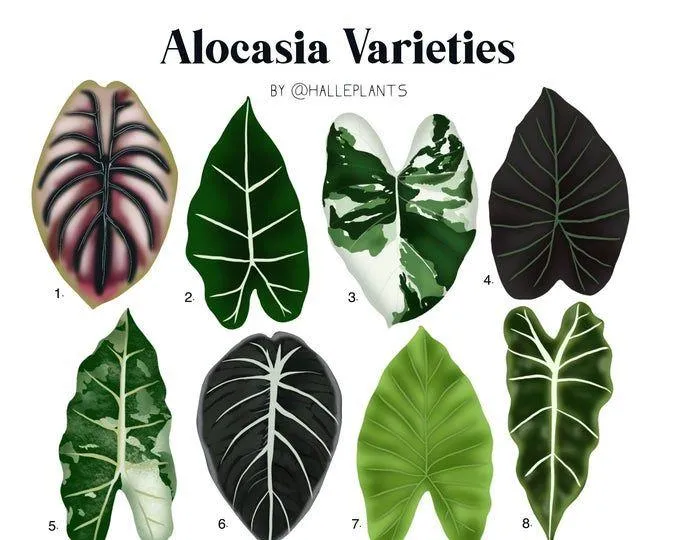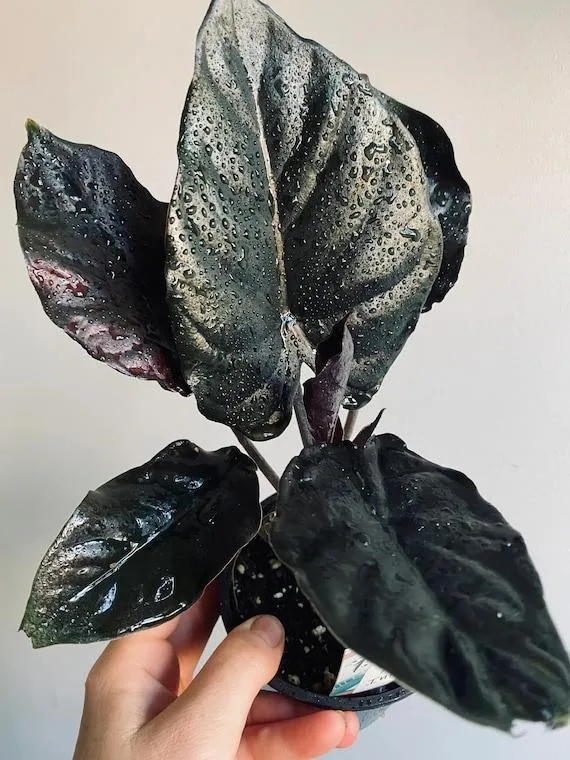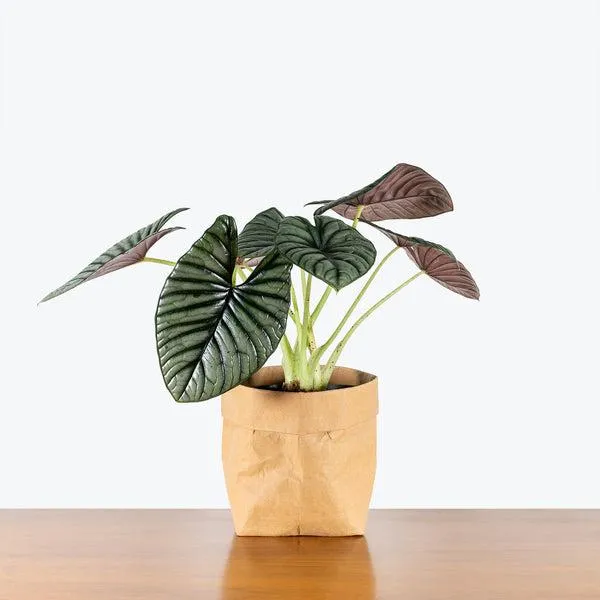Alocasia vs Philodendron: Which Tropical Plant Is Right For You?
If you’re looking to add some lush greenery to your home but can’t decide between an alocasia or philodendron, you’ve come to the right place. These tropical plants can both make beautiful houseplants but they do have some key differences. In this article, I’ll cover all the major factors to consider like care requirements, growth patterns, toxicity and more so you can determine which plant is the best match for your home and lifestyle.
Plant Characteristics
Let’s start with an overview of each plant’s main characteristics. Alocasias, also called elephant ears, feature large, arrow-shaped leaves that can grow up to 2 feet long. The leaves have a waxy texture and come in a variety of colors like green, purple or white depending on the specific variety. Philodendrons on the other hand have thinner, heart or arrowhead shaped leaves that are typically smaller ranging from 4-12 inches. Philodendron leaves are also pettable with a velvety texture.
Both plants love humidity but alocasias are somewhat less tolerant of dry indoor air since their leaves are more prone to browning. Alocasias tend to be more exotic and bold in appearance thanks to their enormous leaves, while philodendrons have a more delicate, delicate vine-like look. Another key difference is their growth patterns – philodendrons vine outward looking for surfaces to climb while alocasias remain more bush-like and upright.
Care Requirements
- Water: Both like moist soil but alocasias need slightly more frequent watering since their larger leaves transpire moisture faster. Overwatering can cause root rot so only water when the top inch of soil is dry.
- Light: These plants thrive in medium to low indirect light. Direct sun can scorch their leaves. Near an east or west facing window is ideal.
- Humidity: As mentioned, alocasias prefer higher humidity around 50% or more. If the air is dry, mist leaves occasionally or use a pebble tray. Philodendrons are more tolerant of lower humidity levels.
- Fertilizer: Feed monthly in spring and summer with a diluted liquid houseplant fertilizer.
- Pruning: Prune off any fallen or brown leaves. Philodendrons in particular may need vines pruned back occasionally to control their growth. Both can be propagated from cuttings.
- Pest control: Watch for common houseplant pests like spider mites or mealybugs and treat any infestations promptly.
So in summary, alocasias demand a bit more from their environment like higher humidity levels and more frequent watering than philodendrons. However, from my experience philodendrons are kind of less fussy overall. If you have very low humidity or inconsistent watering habits, a philodendron may fare better long term.

Toxicity
Another factor is both plants are somewhat toxic to pets and children if ingested. All parts of alocasias contain calcium oxalate crystals which can irritate the mouth and throat. While philodendron sap contains compounds called phenolics that can cause skin and digestive irritation. However, harm is usually minor if consumed. So if you have curious kiddos or pets, opt for putting these plants up high or behind a safety gate.
Growth Rate
When it comes to growth, philodendrons are basically quicker developers. Given optimal care, they can put on several new leaves per month during spring and summer. Alocasias grow more gradually at around 3-5 new large leaves per year. So if you want to see dramatic progress over months versus years, a philodendron may provide more immediate gratification. On the flip side, alocasias develop into rather dramatic showstoppers over time.
Diseases
One disease common to both is phytophthora root rot caused by overwatering soil. To prevent this, use well-draining potting mix like orchid bark or perlite and only water when very dry. Another issue is fungal leaf spot which appears as brown spots and promotes with high humidity and warm temperatures. Pruning off affected leaves helps control it.
Price and Varieties
Price-wise, philodendrons are generally more affordable starting at around $15-20 at your local garden center or nursery. Meanwhile, alocasias can range from $20-60 depending on variety and size. As for varieties, philodendrons come in over 500 hybrids but common ones include heart leaf (P. cordatum), brasil and micans. Alocasias have several striking cultivars too like Polly, African Mask and Black Velvet.

So in conclusion, both plants are low maintenance tropical beauties. However, alocasias prefer higher humidity, need more frequent watering and are slightly harder to care for. Philodendrons suit a wider range of conditions and grow much faster. So if you want something easier to please or are new to houseplants, a philodendron might be kinda the safer choice. But an alocasia will reward you with its awe-inspiring foliage!
I hope this comparison has helped shed some light on the differences between these two awesome indoor plants. Feel free to let me know if you have any other questions! Personally, I have both in my home – the alocasia as a talking point in my living room and some easy philodendron cuttings rooting in water on my kitchen window sill. May the plant of your choice bring you many years of joy.
Alocasia vs Philodendron: A Care Comparison
| Plant | Growth Rate | Light Needs | Water Needs | Toxicity |
|---|---|---|---|---|
| Alocasia | Moderate | Medium to bright indirect light | Keep soil moist, allow to dry slightly between waterings | Toxic to pets and children |
| Philodendron | Slow | Low to medium light | Water when top inch of soil is dry | Non-toxic |
| Alocasia | Tropical appearance | Large, arrowhead shaped leaves | Varieties range from green to purple/burgundy | Prone to spider mite infestations |
| Philodendron | Vining habit | Heart shaped leaves | Variegated varieties available | Tolerates lower light conditions |
FAQ
-
What’s the main difference between alocasia and philodendron?
Alocasias are different than philodendrons basically because alocasias have larger, arrow-shaped leaves unlike philodendron’s heart or arrowhead leaves. Alocasias also have a rhizome that grows above ground so it looks sort of like a corm. Meanwhile philodendrons usually climb or trail and have aerial roots.
-
How fast do alocasias and philodendrons grow?
Alocasias can grow kind of quickly within a few months, producing several large leaves. However, philodendrons are generally slower growing. They’ll put out a new leaf every few weeks but won’t get super huge. So alocasias may thrive a little better for people wanting fast progress. At the same time, philodendrons are probably more suitable if you don’t mind the plants taking their time.

-
What climate conditions do they prefer?
Both alocasias and philodendrons like warm, humid conditions to flourish. They can tolerate quite a variety of light though – from low to bright indirect light. Nevertheless, philodendrons will better withstand a little dryness or colder temps compared to alocasias. So philodendrons have a wider range of climate adaptability overall.
-
Do they require similar care?
In some ways, the care requirements are similar for alocasias and philodendrons. They both enjoy moist but well-draining soil. You’ll need to water them when the top inch dries. However, alocasias may need a little more fertilizer to keep their huge leaves looking stunning. Philodendrons also tend to be pretty low maintenance as far as plants go. On the other hand, alocasias may be slightly pickier.
-
Which one has the cooler looking leaves?
This one is kind of subjective because beauty is in the eye of the beholder. But a lot of plant folks would probably agree that alocasias have some pretty amazing foliage. Like have you seen an ‘African Mask’ alocasia? The huge velvety leaves look unreal! Meanwhile, philodendron hederaceum ‘Brazil’ has heart-shaped leaves that are just as lovely. Hmm, maybe we should ask the plant experts at the botanical garden which one wins in a leaf-off showdown!
-
Which makes a better houseplant?
Both alocasias and philodendrons can work well as houseplants. Alocasias might have the edge for dramatic visual impact with their big tropical leaves. But philodendrons are more forgiving of occasional mistakes in care. You’d have to be pretty awful to kill a philodendron! So if you’re new to keeping plants or don’t have a green thumb, a philodendron may be more suitable. But perhaps an alocasia is worth it if you’re up for the challenge of a stunning display plant.

In conclusion, both alocasias and philodendrons can make awesome indoor plants. It mostly depends on your preferences for leaf shape and size, growth rate, climate needs, and level of plant care experience. Stop by your local nursery and see which one calls out to you. With a little TLC, either will add life and delight to your space for years.
